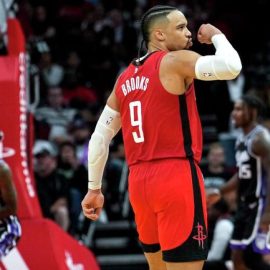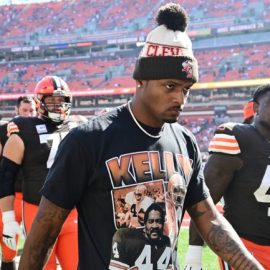Ahh the hamstring. The bane of the pacy player. Nothing turns a manager’s stomach more than their £20m striker running at a defence at full pace, before pulling up sharper than Steve Claridge outside a bookies’.
As shown opposite, the hamstring muscle group contains three muscles – biceps femoris, semitendonosus and semimembranosus. The function of the hamstring muscles is the give flexibility to the knee and hip, allowing players to stretch their legs, run at pace and turn quickly.
A torn hamstring usually comes under three categories, first, second and third degree. The recovery period, and treatment advised, depends on the severity of the tear. The most common hamstring injury is the pull, sustained when one or more of the hamstring muscles are stretched beyond its capabilities and damage is caused to some of the muscle fibres. This can happen in a number of ways, but most commonly when running at pace, or when stretching for a ball.
A first-degree hamstring pull will usually rule a player out for two to three weeks, during which time a diet of RICE (Rest Ice Compression & Elevation) is usually the best prescription. The main worry with such an injury comes from re[occurrence; rushing back from a hamstring injury is ill-advised as it can lead to more serious pulls and tears, which can take longer to heal.
A complete tear, or a third degree hamstring injury, will often require surgery to repair the muscle, and can rule a player out for up to five months. Michael Owen is one player who famously suffered a torn hamstring whilst playing for Liverpool at Leeds in 1999, and saw his career blighted by niggling hamstring injuries for many seasons to come. And this despite numerous medical experts offering their opinions on the subject as well. Kieron Dyer, Craig Bellamy & Fernando Torres have also experienced problems with their hamstrings, with pacy players seemingly more at risk.
However, it’s not all bad news. Unlike the broken leg or the cruciate ligament injury, there are measures that can be taken to help prevent such injuries. Coaches regularly press home the importance of a thorough warm-up before a game, and warm-up routines these days are far more finely tuned to ensure that every precaution is taken to protect the muscles and joints of a club’s main assets.
The post-match warm-down has also been added to the modern game, enabling players to warm-down their muscles and get rid of any excess waste that may have built up during a game or training session.
More and more clubs now use ice-baths both after matches, and at their training ground. These freezing cold wheelie-bins may look rather primitive, but they play a key role in revitalizing tired muscles, draining the existing blood from the legs, so that fresh blood will be pumped into the muscles and more oxygen received. Makes sense when you think about it.
Perhaps the worst thing about the hamstring injury is not just the fact that it often strikes a player when they are at full pelt, either running or stretching, but the fact that it can often be a long term problem. Very rarely will you see a player able to play through a hamstring injury, with a week or two’s rest the minimum requirement. Rushing a player back from such an injury can have far more serious consequences long term, as show in the case of Owen.
Back to Football Injuries.
Add Sportslens to your Google News Feed!






